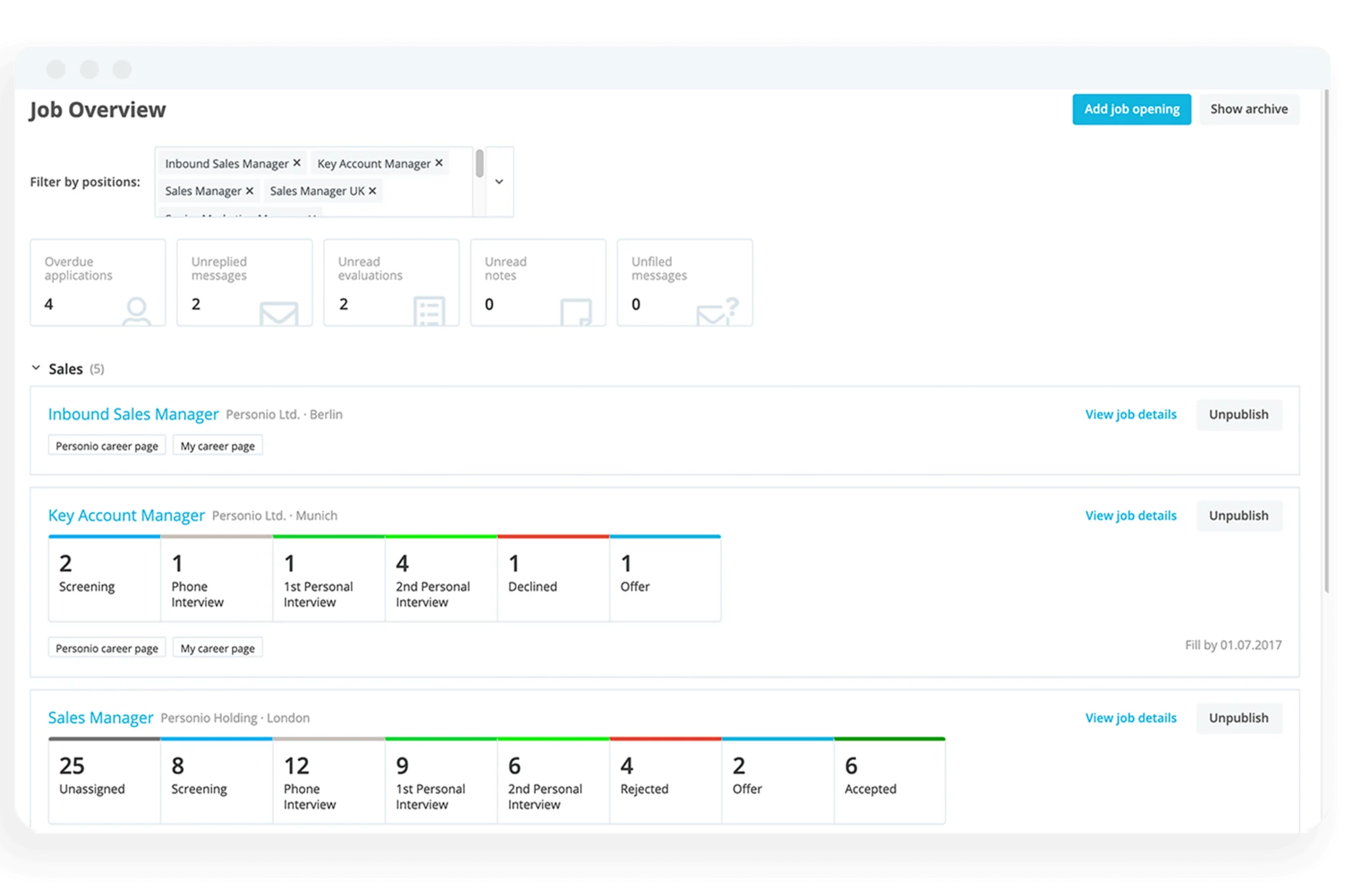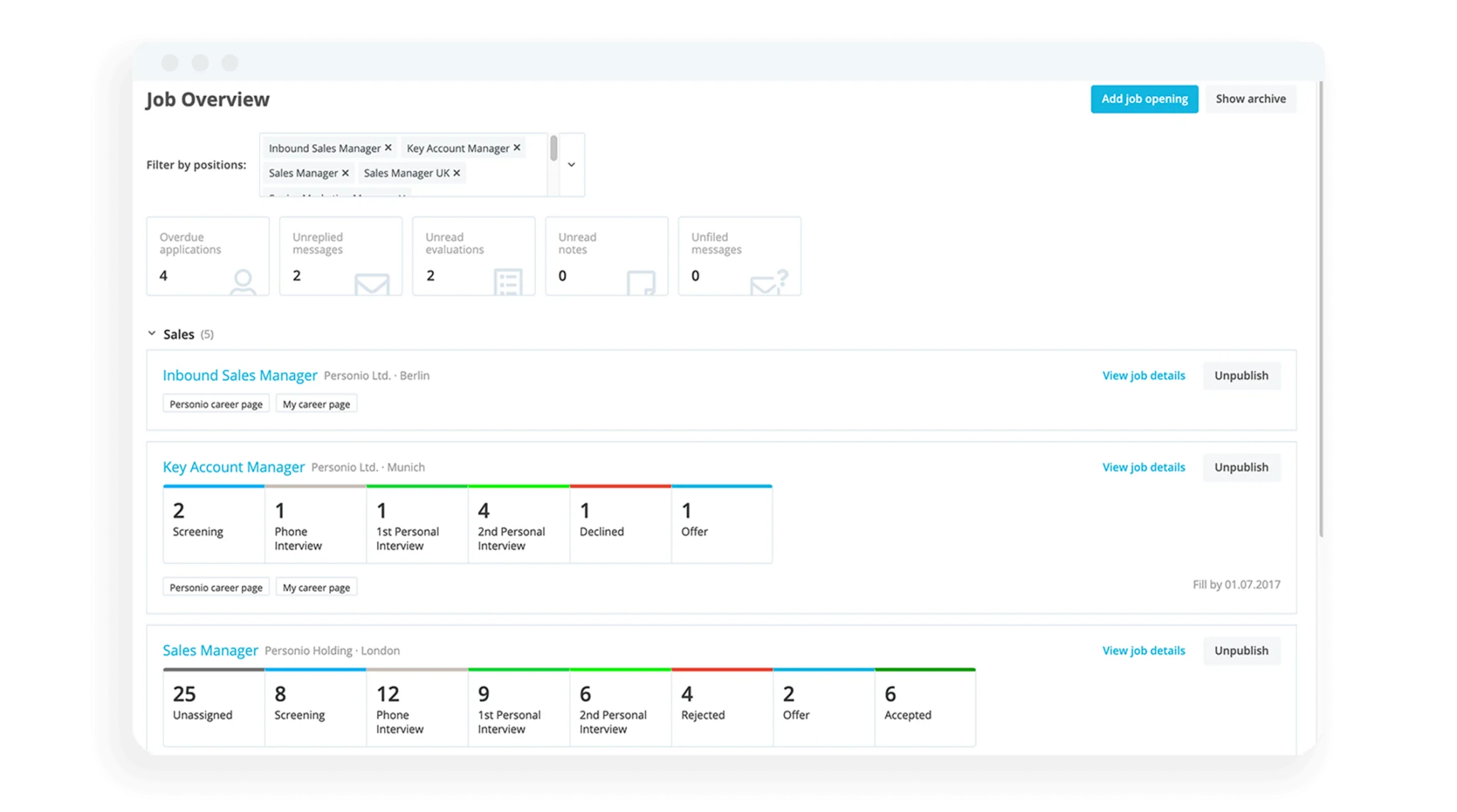What Is the Job Requisition Process?
Job requisitions are a key part of hiring that set up the foundation for a successful candidate search – but they need to be implemented properly to be most effective.
Streamlining and automating the job requisition process takes the weight off of hiring managers’ shoulders. It also ensures hiring aligns with the company’s goals, values and guidelines.
Personio allows you to publish job postings on several portals with just one click. Find out all the details here.What Is a Job Requisition?
A job requisition is a form or document that requests the hiring of new employees, usually from a department manager or other leader in the organisation. When the manager needs to add to their workforce or replace the one they have, they’ll fill out a job requisition.
The requisition usually includes information such as:
Position title
Name of the manager making the request
Type of employment (e.g. permanent vs. fixed-term)
Which department or team the role would belong to
Start date or timeline
Budget or proposed salary range and benefits
Justification for why the new hire is needed
Job description
Note: A job requisition is an internal document, while a job posting or job advert is an external advertisement that makes the opening known outside the organisation.
Building a Solid Job Requisition Process
In addition to these core questions that are part of most job requisition processes – job role, main responsibilities, timeline, budget, etc. – it’s important to clarify what type of employee you’re looking for.
This may go beyond what will ultimately end up in the external job posting.
Communicating specific details to the HR team or HR business partner gives managers the best chance of ending up with a hire that actually meets needs.
Symptoms of a Bad Hiring Process
Having an unstructured hiring process – for example, without job requisitions – can create many issues for organisations. These symptoms include:
Losing candidates when they see you don’t know what you’re looking for – Candidates are often turned off if their first interaction with the company shows a lack of organisation and communication.
Talking to poor-fit candidates – If the recruiting team doesn’t know what to look for, the pool of candidates your hiring team must talk to will be too wide and may include applicants who don’t fit the bill.
Internal conflict after interviewing candidates – After the interviews take place, there may be seemingly endless internal discussions and conflicting opinions on who or what is the right choice. With a job requisition, the hiring team has a single source of truth to look to.
Misalignment on budget – Maybe your team gets all the way through the hiring process – you found a great candidate, they’re keen on the position, and you spent hours on them – only to find out you’re misaligned internally on the budget. Avoid this from the start.
Benefits of a Job Requisition Process
A formalised job requisition process sets hiring managers up for success and ensures hiring is aligned with the company’s goals, values and guidelines.
The benefits of such a process include:
Asking (and answering) important questions early on – Putting the hiring need and ideal candidate profile in writing means key questions can be answered from the start. For example, what skills are required? What experience or level of seniority should the hire have achieved already?
Alignment of expectations – Just as a bad hiring process could show candidates your team doesn’t know what it wants, a solid process will help you align expectations between all candidates and the hiring team.
Better candidate experience – Having all the important details ironed out ahead of time will lead to a better experience for your candidates. The questions you answer internally beforehand (i.e. in the job requisition document) will likely be asked by them anyway.
Save time – Rather than having those lengthy internal discussions (or conflicting opinions) after the interview process, your team will be aligned in advance, saving you time and stress.
Talent strategy & succession planning – Formalised documentation helps hiring teams keep track of their talent strategy and know what skills are being brought into the organisation.
Formalising your job requisition process may take an investment of time and resources upfront, but it will save hiring managers and people ops teams countless mistakes down the line.


